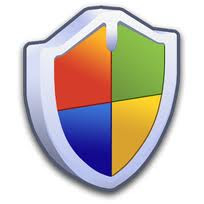A virus is a program that can replicate itself, it usually does this by attaching itself to another object such as an e-mail attachment. Viruses are generally a destructive program designed to corrupt data files and delete installed programs on your PC, and possibly damage the operating system.
Other security threats such as worms and spy-ware also need to be protected against. A worm is a program that often copies itself from one computer on a network to another, worm programs can also contain virus codes that can do damage to your data and wreak havoc with the performance of your PC.
Spy-ware programs are just what the name implies, these are software programs that can track your web surfing habits, display pop-up ads, redirect your browser to a different homepage that's not yours. And collect personal information without your permission.
Number One. First line of defense in securing your computer is creating a log on password. The log on password that you create should not be one that could be easily guessed. Your password should be at least eight characters long, the longer the better. You should use a combination of upper and lowercase letters, numbers, punctuation marks, and spaces.
Do not use your name, your pets name, child's name or any word that can be found in the dictionary. You can also use a phrase as a password, up to 127 characters, it should be something easily remembered by you, so it's not necessary to write it down.
Number Two. The second line of defense in securing your computer is applying a firewall to block outside intruders.Use Windows Firewall, it comes with Windows 7, and is much improved over the previous Windows versions. Any time you're connected to a network, whether it's a private or a public network, you are at risk. Each computer on the network should have its own firewall. That way if another user's computer becomes infected because they are not as vigilant about securing their computer, you will still be protected.
One example is if you take your laptop to work. You may think you're protected because your work place has a firewall installed for their network. But if a co- worker brings in their laptop and it is infected with a virus or mall-ware, you will only be protected If you have a personal firewall installed.
Number Three. The third line of defense is to use an anti-virus program. Windows 7 does not come with an anti-virus program. You will need to obtain one. There are literally hundreds of anti-virus programs available, you can purchase one at a local retailer, or purchase a download online, or download one of the many free versions available. Whatever option works best for you, make sure you do some research about the particular program you choose.
One of the best options is to download a trial version of the anti-virus software of your choice, that way you can try it out on your system, to see if it's the right fit for you. Many of the free versions work as well as the boxed versions. With one exception being the virus definition updates are sometimes slow in coming with the free programs.
Number Four. The fourth line of defense is to use an anti-spyware program. Windows 7 includes a program called Windows Defender, which works well as an anti-spyware program. Some of the indications of spyware infections are new toolbar s in your web browser and new favorites and links that you don't recognize. Also, your homepage might have changed, and you don't know why, you have numerous pop-up ads appearing and you're Internet browser crashes or slows down.
Windows Defender runs continuously in the background monitoring your system to prevent the installation of spyware, and to alert you to any spyware like activity. Windows defender's automatic scans have been improved in Windows 7 over the previous versions of Windows. The automatic scans use less resources than they did in the previous versions. You can schedule the automatic scans to run at whatever time is best so as not to interfere while you are using your computer.
Number Five. The fifth line of defense is to keep Windows up to date. The Windows Update service in Windows 7 is much improved over the version in Windows XP. It no longer is a web-based interface, but is now a Control Panel application. Keeping Windows up to date is an essential step in the security of your computer. The Windows Update feature can be configured to run totally automated, it will search for, download, and install the updates with no needed interaction from you.
There are three categories of updates, important, recommended, and optional. It is recommended to let Windows Update install the important updates as they become available. Security updates are the most important items in the important category, therefore, you should let Windows Update download and install the security updates so you are continuously protected from those who would exploit the vulnerabilities in Windows.
Source: http://EzineArticles.com/5806992







 Windows Firewall can also help protect your computer from hackers and malicious software. With Windows 7, the built-in firewall is more flexible and easier to use than before.
Windows Firewall can also help protect your computer from hackers and malicious software. With Windows 7, the built-in firewall is more flexible and easier to use than before.




